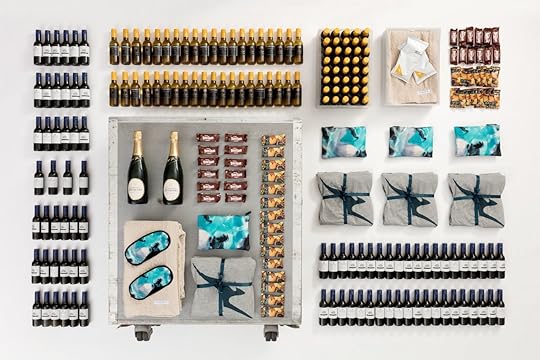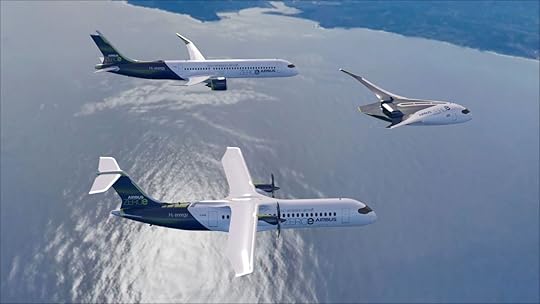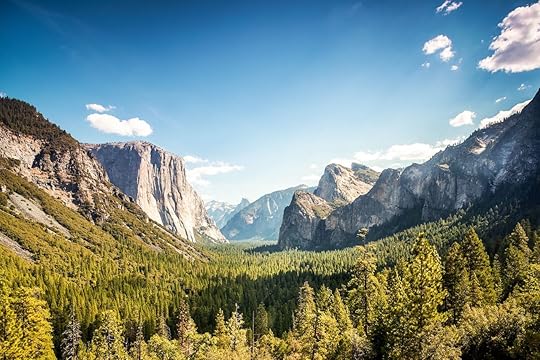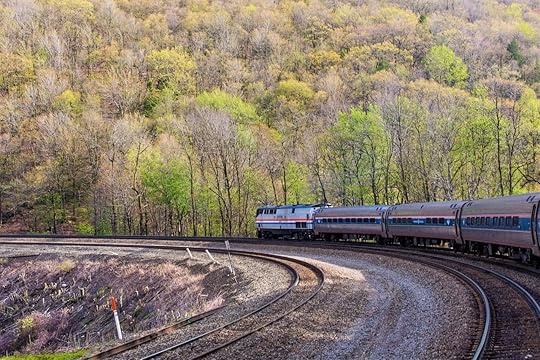Matador Network's Blog, page 777
September 25, 2020
Landmine-detecting rat gets medal

This rat is the newest recipient of a medal of bravery — and it is much deserved. The heroic rat named Magawa was awarded the PDSA Gold Medal for his “lifesaving bravery and devotion to duty,” thanks to his efforts in ridding Cambodia of landmines.
The PDSA Gold Medal, created by the People’s Dispensary for Sick Animals, rewards acts of animal bravery and exceptional devotion to duty.
An African giant pouched rat born in Tanzania, Magawa grew up at APOPO’s Training and Research center in Tanzania where he was taught to detect explosives using his nose. After nine months of training, he was ready for the most dangerous mission of his life.

Photo: APOPO
Magawa was moved to Siem Reap, Cambodia, in 2016 to live under the care of Malen, his new handler. Since he started his work in Cambodia, Magawa has uncovered 39 landmines and 28 other unexploded items. In the past four years, he has helped clear over 1.5 million square feet of land. This makes him APOPO’s most successful HeroRAT in history and the first to be presented with the PSDA Gold Medal.
Landmines remain a huge threat in over 59 countries, including Cambodia. They complicate every aspect of daily life, including food security, personal safety, economic development, and access to trade routes. APOPO’s goal is to clear as many land mines as possible, with its Cambodia program helped tremendously by animal heroes like Magawa. 
More like thisCultureHunting for landmines in Cambodia: ‘If you see a bomb, don’t touch it’
The post Magawa, the landmine-detecting rat, has received a gold medal for his bravery appeared first on Matador Network.

Carnival 2021 postponed in Brazil

All of our favorite events have either been canceled or postponed this year, so we shouldn’t be too surprised that Brazil’s famous Carnival has also been pushed back for 2021. The world famous event, which was supposed to take place in February 2021, is canceled until a vaccine is found.
As reported by Aljazeera, Jorge Castanheira, the president of the Independent League of Rio de Janeiro Samba Schools, which organizes the event, said, “We came to the conclusion that the event had to be postponed. It’s increasingly difficult to have Carnival without a vaccine. There is no way to have Carnival without safety.”
This delay only applies to the samba school competition, which includes the country’s best 13 samba schools. Several other events also comprise Carnival, like informal street parties called blocos. No decision has been made regarding the rest of these events. 
More like thisFood + Drink10 mouthwatering cheesy, fried, and savory snacks from Brazil
The post Rio already postpones 2021 Carnival over COVID-19 fears appeared first on Matador Network.

Qantas is selling fully stocked bar

Even if we’re all taking a little break from travel, we can still enjoy the best part of the flying experience right from your couch — the bar cart. On Qantas Airways, 1,000 galley carts were removed from a recently retired 747 aircraft, and the airline is offering them up to the public.

Photo: Qantas
The airline has stated that frequent flyers have expressed interest in purchasing unused bar carts and putting them to creative use, like lamp stands and storage units. So it has decided to sell them to anyone who is eager to own an authentic piece of Qantas memorabilia.
In a press release, Qantas Executive Manager of Product and Service Phil Capps explained, “These pre-loved carts served Qantas and our customers well during their world travels from London and Los Angeles to Singapore and Santiago, with each one averaging around 2,000 flights. While we no longer have use for them, they still have life in them, especially for those with an appreciation for aviation collectables and an eye for design.”

Photo: Qantas
The carts come stocked with 80 mini bottles of white and red wine, two bottles of Champagne, four Qantas business class amenity kits and sleeper suits, two first-class throw pillows, and treats like Tim Tams, biscuits, and smoked almonds. The half bar option comes with — you guessed it — half of these item quantities.
The full-size bar costs $1,036, including delivery, while the half-size cart comes in at $685. Delivery is only possible right now to metro locations in Sydney, Brisbane, Melbourne, Adelaide, and Perth. More details are available online. 
More like thisAirports + FlyingThe best (and worst) drinks to order on an airplane
The post Qantas is selling fully stocked bar carts so you can drown your 2020 sorrows in airplane wine appeared first on Matador Network.

Airbus announces ZEROe airplane

This is The Climate Win, the most positive sustainability news around the world every week.
This week, Airbus joined a growing number of businesses and governments worldwide in pledging an emissions-free future. The world’s largest airplane maker announced design concepts for three commercial aircraft — dubbed ZEROe — that will run on hydrogen and emit nothing but water vapor. Airbus said planes will use groundbreaking new technology and will be in operation by 2035.
“This is a historic moment for the commercial aviation sector as a whole, and we intend to play a leading role in the most important transition this industry has ever seen. The concepts we unveil today offer the world a glimpse of our ambition to drive a bold vision for the future of zero-emission flight,” said Airbus CEO Guillaume Faury in a press release. “I strongly believe that the use of hydrogen — both in synthetic fuels and as a primary power source for commercial aircraft — has the potential to significantly reduce aviation’s climate impact.”
Faury touts the power of hydrogen, both as a complete energy source and as part of synthetic aviation fuels, as the key to reducing the airline industry’s environmental impact. The first of the three ZEROe models, the turbofan design, is the most visually similar to current commercial aircraft. It’s designed to carry a minimum of 100 passengers and as many as 200, and will be capable of flying up to 2,000 nautical miles. The second, a turboprop design, will travel 1,000 miles, and the third, a space-age looking “blended wing body,” will carry 200 passengers and fly up to 2,000 miles per trip.

Photo: Airbus
“These concepts will help us explore and mature the design and layout of the world’s first climate-neutral, zero-emission commercial aircraft, which we aim to put into service by 2035,” Faury said.
Faury noted, however, that the viability of these planes would require the support of the entire aviation industry, including the airports they fly into. Airports must develop infrastructure for hydrogen fuel purchasing, transfer, storage, and dispensing on site. Support from governments will be key.
More climate wins
Chinese President Xi Jinping announced Tuesday that China would reach climate neutrality by 2060, according to a report in The New York Times. No other specifics of the plan were given, and time will tell whether this was a move in the ongoing political chess match between China and the United States, especially given China’s current heavy reliance on coal power. Either way, it’s loud and attracting attention, which is sure to spur further action from other countries.
There was plenty of news on the electric transportation front this week. Most notably, California Governor Gavin Newsom announced that the state would ban the sale of new gas-powered vehicles by 2035 and said he had directed the state’s transportation agencies to focus on near-term goals to reduce the amount of driving as a primary means of transportation.
Tesla CEO Elon Musk announced that the company would sell a new $25,000 electric vehicle within three years.
Finally, a new marketplace for electric micro-mobility transportation is here. Ridepanda serves as the world’s first online marketplace for electric personal transportation such as e-bikes, scooters, and e-mopeds. Vehicles will be shipped to the buyer after purchase. The company even put together a quick quiz to help you find your perfect electric ride. 
More like thisNewsThe world missed its 2020 biodiversity targets, UN report shows
The post Airbus says it will make hydrogen-powered, zero-emissions airplanes by 2035 appeared first on Matador Network.

Yosemite National Park reopening

Yosemite National Park is reopening on Friday, September 25, just in time for National Public Lands Day on Saturday, September 26. The park closed on September 17 due to the effects of hazardous smoke from the Califorrnia wildfires, but now park officials have determined the area is once again safe to visit.
Guests will be allowed to enter Yosemite starting Friday at 9:00 AM, though only some visitor services — like campsites — will be available. The rest will reopen over the course of the weekend.
Yosemite isn’t the only park that closed during the wildfires. A total of 34 parks in California closed, though many of these parks have since reopened. Most tragic among these, Big Basin Redwoods State Park announced earlier that it would stay closed for 12 months after the park’s headquarters, ranger station, nature museum, gatehouse, campground bathrooms, and several park residences were destroyed by fires.
Yosemite’s reopening comes just in time for National Public Lands Day, an annual holiday where all US national parks offer free entry. Given the fortuitous timing, this weekend might be the perfect time to take a trip to Yosemite. 
More like thisParks + Wilderness7 beautiful, underrated public lands to visit in the eastern US
The post Yosemite is reopening to visitors today after closing due to hazardous wildfire smoke appeared first on Matador Network.

Amtrak two-for-one sale on Northeast

Knowing that travelers are eager to plan a fall getaway — and since international travel isn’t really an option — Amtrak is launching a buy-one-get-one sale on all Acela and Northeast Regional trains throughout the Northeast Corridor, from Boston to Virginia. In addition to the BOGO sale, you can also purchase a ticket for as low as $30, meaning you can travel with a friend for a combined cost of just $30.
For just $30 you can travel between Richmond, VA, and Washington, DC, or Norfolk, VA, and Washington, DC for $50. For $56, you can take a train between Washington, DC and Philadelphia, or between New York and Philadelphia. For $69, you can score a ride between New York and Washington, DC, Boston, or Baltimore.
Most fares on the Northeast routes are priced under $100, with many $99 fares between Boston and New York; Philadelphia and New York; and Washington, DC and Philadelphia.
The BOGO deal can only be booked through September 30, and is valid for travel dates between September 24 and December 12, excluding Fridays and Saturdays.
Amtrak’s new health and safety protocols include blocking middle seats, limiting train capacity, mandatory mask wearing, and fresh air filter exchange every five minutes. 
More like thisTrain Travel7 things to know before riding Amtrak across the country
The post Amtrak is having a buy-one-get-one sale on its Northeast routes appeared first on Matador Network.

September 24, 2020
China commits to carbon neutrality

One of the only ways to curb the climate crisis is for countries to make a concerted effort to reduce their emissions. China is setting a lofty goal for itself, committing to becoming carbon neutral before 2060. This announcement, made to the United Nations general assembly, gives the UN a nudge in the right direction as nations chart a united path forward to address the climate emergency.
According to the Chinese president Xi Jinping, “China will scale up its intended nationally determined contributions [under the Paris climate agreement] by adopting more vigorous policies and measures.”
This would be the first long-term commitment on decarbonization from China, the world’s largest emitter of CO2. Previously, the country had only committed to aim for peak emissions in 2030. With the new promise to carbon neutrality, China is setting a powerful example for other nations.
According to Li Shuo, a senior climate and energy policy officer at Greenpeace East Asia, for The Guardian, “Xi’s pledge will need to be backed up with more details and concrete implementation. By how much earlier can China peak its emissions? How to reconcile carbon neutrality with China’s ongoing coal expansion? These are hard questions that demand a better response from Beijing. But [the commitment] will certainly help turn a challenging year for the environment around and mark it as the beginning of a reinvigorated round of global climate efforts.”
Last week, the EU also announced further commitments under the Paris agreement to cut emissions by 55 percent by 2030. China’s announcement bodes well for the international community’s ability to cut emissions dramatically soon.
The US is glaringly absent from any global effort to combat the climate crisis. They’re scheduled to withdraw from the Paris accord on November 4. A Joe Biden victory in November, however, would likely see the US rejoin the international agreement. 
More like thisNewsThere’s a new way to ensure your clothing and travel gear is sustainable
The post China has committed to becoming carbon neutral before 2060 appeared first on Matador Network.

Popular books set in every country

Some novels are inextricably linked to their settings. In many cases, the location feels like a character in itself, a living and breathing protagonist whose interests are intertwined with its human counterparts and whose presence is felt on every page. NetCredit compiled a list of the most popular books set in every country in the world to really highlight which works of literature let their settings shine. NetCredit created an algorithm to give each book a score according to its Goodreads rating (about 13,000 books total) then made a series of virtual bookshelves and maps to showcase the top-scoring book set in each country.
All graphics are courtesy of NetCredit
North and Central America

The Help by Kathryn Stockett is the most popular book set in North America, taking place in Jackon, Mississippi, in the 1960s and told by three women — a Black maid, her best friend, and a young white woman. Jurassic Park also scored highly, even though its setting is the fictional Isla Nublar, which is supposed to be an island of Costa Rica.
Canada: “Anne of Green Gables” by L.M Montgomery
USA: “The Help” by Kathryn Stockett
Mexico: “Like Water for Chocolate” by Laura Esquivel
Guatemala: “Grave Secrets” by Kathy Reichs
Belize: “Beka Lamb” by Zee Edgell
El Salvador: “One Day of Life” by Manlio Argueta
Honduras: “The Mosquito Coast” by Paul Theroux
Nicaragua: “The stars at Noon” by Denis Johnson
Costa Rica: “Jurassic Park” by Michael Crichton
Panama: “Avengers” by Frederick Forsyth
Cuba: “Skeleton Key” by Anthony Horowitz
Haiti: “Island Beneath the Sea” by Isabel Allende
Dominican Republic: “The Brief Wondrous life of Oscar Wao” by Junot Díaz
Jamaica: “White Teeth” by Sadie Smith
Antigua and Barbuda: “Lucy” by Jamaica Kincaid
Dominica: “Wide Sargasso Sea” by Jean Rhys
Trinidad and Tobago: “Golden Child” by Claire Adam
South America

South America can lay claim to Isabel Allende’s The House of the Spirits, a saga set in Chile that touches on the lives of three generations of the Trueba family. Kurt Vonnegut’s Galapagos also makes the list, telling the story of the reverse evolution of mankind set in Ecuador.
Venezuela: “Robinson Crusoe” by Daniel Defoe
Ecuador: “Galapagos” by Kurt Vonnegut JR.
Colombia: “Clear and Present Danger” by Tom Clancy
Peru: “The Celestine Prophecy” by James Redfield
Bolivia: “The Lost World” by Arthur Conan Doyle
Brazil: “State of Wonder” by Ann Pratchett
Paraguay: “Zana” by Antonio di Benedetto
Chile: “The House of Spirits” by Isabel Allende
Argentina: “The Aleph and Other Stories” by Jorge Luis Borges
Uruguay: “The City of your Final Destination” by Peter Cameron
Europe

John Green’s The Fault in Our Stars is the most popular book set in Europe, partially taking place in the Netherlands. It tells the story of a 16-year-old cancer patient who travels to Amsterdam to meet the author of a mysterious book about a cancer patient.
Iceland: “Red Storm Rising” by Tom Clancy
Ireland: “Angela’s Ashes” by Frank McCourt
Northern Ireland: “Milkman” by Anna Burns
Wales: “Miss Peregrine’s Home for Peculiar Children” by Ransom Riggs
England: “Pride and Prejudice” by Jane Austen
Scotland: “Harry Potter and the Philosopher’s Stone” by J.K. Rowling
Norway: “Sophie’s World” by Jostein Gaarder
Sweden: “The Girl with the Dragon Tattoo” by Steig Larsson
Finland: “Colorless Tsukuru Tazaki and His Years of Pilgrimage” by Haruki Murakami
Lithuania: “Between Shades of Gray” by Ruta Sepetys
Latvia: “Holes” by Louis Sachar
The Netherlands: “The Fault in Our Stars” by John Green
Belgium: “The Day of the Jackal” by Frederick Forsyth
Denmark: “The Tragedy of Hamlet, Prince of Denmark” by William Shakespeare
Germany: “The Book Thief” by Markus Zusak
Poland: “The Boy in the Striped Pyjamas” by John Boyne
Portugal: “The Night in Lisbon” by Erick Maria Remarque
Spain: “The Shadow of the Wind” by Carlos Ruis Zafón
Andorra: “Mr. S and the Secrets of Andorra’s Box” by Ross O’Carroll-Kelly and Paul Howard
France: “The Nightingale” by Kristin Hannah
Monaco: “Loser Takes All” by Graham Green
Lichtenstein: “H.R.H” by Danielle Steel
Switzerland: “Frankenstein” by Mary Wollstonecraft Shelley
Italy: “The Mark of Athena” by Mark Riordan
Malta: “The Man on Fire” by A.J. Quinnell
Vatican City: “The Agony and the Ecstasy” by Irving Stone
Austria: “The Hotel New Hampshire” by John irving
Croatia: “The House of Hades” by Mark Riordan
Hungary: “The Paul Street Boys” by Ferenc Molnár
Bosnia and Herzegovina: “Line of Sight” by Mike Maden
Albania: “Broken April” by Ismail Kadare
Czech Republic: “The Amazing Adventures of Kavalier & Clay” by Michael Chabon
Kosovo: “My Cat Yugoslavia” by Pajtim Statovsci
Slovakia: “Rivers of Babylon” by Peter Pišťanek
Montenegro: “Over my Dead Body” by Rex Stout
Cyprus: “Exodus” by Leon Uris
Serbia: “Garden Ashes” by Danilo Kiš
Greece: “Twenty Thousands Leagues Under the Sea” by Jules Verne
Romania: “Dracula” by Bral Stoker
Azerbaijan: “Ali and Nino” by Kurban Said
Bulgaria: “Under the Yoke” by Ivan Vazov
Armenia: “The Fool” by Raffi
Ukraine: “Everything is Illuminated” by Jonathan Safran Foer
Russia: “Crime and Punishment” by Fyodor Dostoyevski
Middle East and Central Asia

Khaled Hosseini’s The Kite Runner is the most popular novel set in the Middle East and Central Asia, telling the story of the relationship between a wealthy boy and the son and grandson of his father’s servant, set in Afghanistan. Another novel, My Heart A Jewish Girl, also ranked highly. Written by Khawla Hamdi, the book is about an orphaned Muslim girl living with a Jewish family in Lebanon.
Kazakhstan: “The War in 2020” by Ralph Peters
Turkey: “My Name is Red” by Orhan Pamuk
Syria: “Sea Prayer” by Khaled Hosseini
Iraq: “The President’s Gardens” by Mushin Al-Ramli
Iran: “My Uncle Napoleon” by Iraj Pezeshkzad
Afghanistan: “The Kite Runner” by Khaled Hosseini
Lebanon: “A Jewish Girl Lies Within My Heart” by Khawla Hamdi
Palestine: “Lamb: The Gospel According to Biff, Christ’s Childhood Pal” by Christopher Moore
Saudi Arabia: “Goat Days” by Benyamin
Israel: “The Source” by James A. Michener
Jordan: “Appointment With Death” by Agatha Christie
Yemen: “Icon” by Frederick Forsyth
Oman: “The Icarus Agenda” by Robert Ludlum
Asia and Oceania

The Memoirs of a Geisha, written by Arthur Golden, is the first-person story of a geisha working in Kyoto, Japan, and the most popular book set in Asia. The story was also made into a film in 2005.
Mongolia: “Snow Flower and the Secret Fan” by Lisa See
China: “Cinder” by Marissa Meyer
Pakistan: “The Reluctant Fundamentalist” by Moshin Hamid
North Korea: “The Orphan Master’s Son” by Adam Johnson
South Korea: “Kim Ji-Young: Born 1982” by Cho Nam-Joo
India: “Life of Pi” by Yann Martel
Nepal: “Sold” by Patricia McCormick
Macau: “Peking & The Tulip Affair” by Nick Carter
Hong Kong: “Around the World in 80 Days” by Jules Verne
Bangladesh: “A Golden Age” by Tahmima Anam
Myanmar: “Burmese Days” by George Orwell
Laos: “The Coroner’s Lunch” by Colin Cotterill
Taiwan: “Threat Victor” by Tom Clancy, Mark Greaney
Sri Lanka: “The Fountains of Paradise” by Arthur C. Clarke
Thailand: “The Beach” by Alex Garland
Cambodia: “Impact” by Douglas Preston
Vietnam: “Edge of Eternity” by Ken Follett
Malaysia: “A Town Like Alice” by Nevil Shute
Singapore: “Crazy Rich Asians” by Kevin Kwan
Philippines: “The Naked and the Dead” by Norman Mailer
Indonesia: “In Too Deep” by Jude Watson
Australia: “The Thorn Birds” by Colleen McCullough
New Zealand: “Cloud Atlas” by David Mitchell
Africa

The Alchemist by Brazilian author Paulo Coelho is the most popular book set in Africa. Taking place partially in Morocco, the book is an allegorical story of a young Spanish shepherd who travels in search of treasure. Americanah by Chimamanda Ngozi Adichie also topped the list, in part set in Nigeria. The book tells the story of a young woman departing military-ruled Nigeria for the US, leaving family, friends, lover, and culture behind.
Morocco: “The Alchemist” by Paulo Coelho
Algeria: “The Stranger” by Albert Camus
Tunisia: “The Tremor of Forgery” by Patricia Highsmith
Libya: “In the Country of Men” by Hisham Matar
Egypt: “The Throne of Fire” by Rick Riordan
Cape Verde: “The Last Will & Testament of Senhor da Silva Araújo” by Germano Almeida
The Gambia: “Roots: The Saga of an American Family” by Alex Haley
Guinea-Bissau: “The Cobra” by Frederick Forsyth
Mali: “Lieutenant de Kouta” y Massa Makan Diabaté
Sudan: “What is the What” by Dave Eggers
Senegal: “So Long a Letter” by Mariama Ba
Sierra Leone: “The Heart of the Matter” by Graham Greene
Ivory Coast: “Monnew” by Ahmadou Kourouma
Ghana: “All God’s Children Need Traveling Shoes” by Maya Angelou
Togo: “Cola Cola Jazz” by Kangni Alem
Benin: “The Viceroy of Ouidah” by Bruce Chatwin
Nigeria: “Americanah” by Chimamanda Ngozi Adichie
Liberia: “Murder in the Cassava Patch” by Bai T. Moore
Uganda: “The Last King of Scotland” by Giles Foden
Ethiopia: “Cutting for Stone” by Abraham Verghese
Rwanda: “Small Country” by Gaël Faye
Kenya: “Crocodile Tears” by Anthony Horowitz
Democratic Republic of the Congo: “The Poisonwood Bible” by Barbara Kingsolver
Tanzania: “The African Queen” by C.S. Forester
Angola: “Long Lost” by Harlan Coben
Namibia: “The Sound of Thunder: A Courtney Novel 2” by Wilbur Smith
Botswana: “The No 1 Ladies’ Detective Agency” by Alexander McCall Smith
Zimbabwe: “The Ear, the Eye, and the Arm” by Nancy Farmer
Lesotho: “Chaka” by Thomas Mofolo
Mozambique: “The Drifters” by James A. Michener
South Africa: “The Power of One” by Bryce Courtenay
Madagascar: “Flashman’s Lady” by George MacDonald Fraser
Mauritius: “The Mauritius Command” by Patrick O’Brian

More like thisBooks20 books we can’t wait to read in 2020
The post The most popular book set in every country in the world appeared first on Matador Network.

Fire lookout tower rentals in the US

The first dedicated fire lookout tower was erected in 1909 on Mount Morris, New York, after nearly one million acres of the Adirondacks were burned by wildfires in 1903 and 1908. The lookouts soon opened to overnight visitors, who left their impressions in guest books that still exist today. In the age of drones and satellites, many fire lookouts have deteriorated or been taken down, but some are still in operation. Yet others, particularly in the Mountain West, have been converted into overnight lodging, and as those guest books attest, they’re among the most engaging places you could enjoy a weekend wilderness escape. Here are some of our favorites.
What to bring when staying in a fire lookout: water for drinking, cooking, and cleaning; food; toiletries; campsite cooking and eating supplies; warm clothes; binoculars; first aid supplies; and a sleeping bag.
1. Lookout Butte Lookout — Nez-Perce Clearwater National Forests, Idaho

Photo: Wildnerdpix/Shutterstock
Five flights above the deep greens of the Nez-Perce Clearwater National Forests, the Lookout Butte Lookout gazes upon the Seven Devils Range from a vantage point few are lucky enough to experience. From its peak you’ll take in the Selway Crags and be able to hike or mountain bike the surrounding forest roads in near-total seclusion, with only a few roaring ATVs in the distance signifying another human presence. The tower is comprised of one room offering 360-degree views, with an outdoor catwalk on which to relax during the sunset. A recent guest noted that the lookout tower came complete with three twin beds and a sleeping pad.
Cost: $40/night
Season: Summer through early-mid autumn
2. Up Up Lookout — Lolo National Forest, Montana

Photo: Jerry Voss/Shutterstock
Western Montana’s Bitterroot Mountains attract mountaineers and anglers from around the country, but very few of them enjoy the views from 40 feet up. The Up Up Lookout is surrounded by hiking trails but is accessible by dirt road, saving you the struggle of backpacking your gear in for the night. The tower comes with propane-powered heat and light and down below has a campfire ring and picnic tables at which to eat and get lost in late-night scary stories. The tower sleeps four, but your best bet if traveling with more than two is to bring a sleeping bag, as it lists only one twin bed and mattress pad.
Cost: $30/night
Season: June-October
3. Calpine Lookout — Tahoe National Forest, California

Photo: Wesley Cogan/Shutterstock
At only three stories, the Calpine Lookout is not as high as many fire lookouts, but it is among the few remaining “windmill”-style lookouts in the country. It offers full-circle views of the surrounding Sierras and is only about 20 miles off the Pacific Crest Trail. If you have a vehicle, that means you can get in a day hike on the legendary through-hiking route and make it back to the tower in time to cook dinner on the outside campfire ring — provided there’s no fire ban in effect. Hiking and mountain biking are also accessible closer to the tower. Visit in winter when the road is closed. You’ll have the true adventure of snowmobiling or backcountry ski touring to the tower and a much easier time getting a reservation since the tower is almost continuously booked during warmer months. No matter when you come, bring a sleeping bag and warm clothes, as no bedding is provided.
Cost: $45/night
Season: Year-round
4. Squaw Mountain Lookout — Arapaho & Roosevelt National Forests, Colorado

Photo: Brian Wolski/Shutterstock
For being less than an hour from downtown Denver, the Squaw Mountain Lookout sure does feel secluded. This tower is among the few you can rent through recreation.gov that has full electricity, including an electric stove, refrigerator, and heat. It doesn’t have bedding, though, so bring a sleeping bag. If the sky is clear you’ll be able to see a few of Colorado’s famed “14ers,” including Mount Evans, Longs Peak, and even Pikes Peak to the south. The nearby town of Evergreen is your base for supplies. In the morning, hike or bike the surrounding area, summiting nearby Bergen Peak if a long day-hike is in order.
Cost: $80/night
Season: Year-round
5. Gold Butte Lookout – Willamette National Forest, Oregon

Photo: Delaney Van/Shutterstock
The pull here is that the Gold Butte Lookout served double duty during its heyday in the mid-1900s. In addition to being a fire lookout tower, this hut was used by the Civilian Conservation Corps as part of the Aircraft Warning System during World War II. For present-day visitors, Gold Butte doesn’t require a steep five-story climb to get to the cabin — but it does necessitate a half-mile hike from the topmost point that vehicles can ascend to. The hut itself is built on top of three-foot stilts. So once you hike the short distance, all you have to do is take a big stride up and you’re inside. The hut has three folding cots and a twin bed, and that’s pretty much it. Nearby, fish or SUP on Elk Lake or hike along any of the nearby trails.
Cost: $89/night
Season: Late June to mid-October
6. Evergreen Mountain Lookout — Mt. Baker-Snoqualmie National Forest, Washington

Photo: JamesWM.foto/Shutterstock
Another fire lookout doubling as an Aircraft Warning Station, Evergreen Mountain Lookout is now listed on the National Register of Historic Places. Here you’ll find battery-powered lighting and some basic kitchenry but not much else. It’s truly a remote lookout where there’s not much to take your mind off the stellar views of Mt. Rainier, Glacier Peak, and the immediate Wild Sky Wilderness. You’ll need sleeping bags and camping amenities, as well as your best hiking boots. The lookout is located at the end of a strenuous hike up the Evergreen Lookout Trail.
Cost: $85/night
Season: Early summer through September 
More like thisParks + Wilderness7 spectacular national parks to visit this fall
The post Stay overnight in a fire lookout tower for a sky-high wilderness escape appeared first on Matador Network.

Flights to nowhere are a bad idea

As lockdowns persist and some travelers find themselves with nowhere to travel, they’ve opted to flip that on its head and travel to nowhere.
That’s right. In the middle of a pandemic, people are getting on planes filled to near- or full-capacity, fastening their seat belts, and taking off. They’re lunching on meals and drinks that are, in most cases, regular airline fare, and landing — anywhere from 90 minutes to a half-day later — in the same airport where they took off.
Taiwan’s Eva Air offered a Hello Kitty themed flight for Father’s Day, Royal Brunei Airways took citizens on an hour-and-a-half flight over its country, and Japan Airlines ran a Hawaii-themed cruise through the sky. Singapore Airlines will also start offering nowhere flights next month.
Eager fliers are snapping up seats. A seven-hour Qantas flight that will take passengers over the Australian continent at altitudes as low as 4,000 feet sold out in ten minutes, with buyers purchasing tickets starting at $566 and reaching $2,734 for business class. Equally popular is Qantas’s flight over Antarctica that takes over 12 hours.
We get the desire to travel. We know that travel expands children’s minds, builds resilience, teaches us about other ways of life, and all that other good stuff. We get to see beautiful places, eat new foods, maybe learn another language.
But, on its own, getting on an airplane is not traveling. Airplanes just take you where you intend to visit. Beyond that, airplane flights are problematic. In 2018, civil aviation around the world dumped 918 million tons of carbon dioxide into the air. Flying is so problematic that climate activist Greta Thunberg won’t do it, and when she was invited to address the United Nations she traveled to New York from her native Sweden by sailboat.
We at Matador Network have come out in defense of air travel, because there are times when it is merited and even beneficial to certain environmental goals. This is especially true when tourism presents itself as an alternative to destructive industries like mining or cattle ranching. We have even suggested places to visit in order to encourage conservation and show governments that preservation of natural areas is economically viable.
“Flights over Antarctica are specifically perverse, in that viewing Antarctica is both awe inspiring and aiding its destruction.”
In fact, the pandemic has shown us the negative effects of reduced tourism in the wild spaces that depend on it. African wildlife conservancies, which dedicate much of their budgets to protecting endangered species against poachers, have seen revenues plummet as international would-be-safari tourists stay home.
But flying comes at a cost.
“Unfortunately flying is the most warming single thing you can do,” Mark Carter of Flight Free Oz told Matador via email. Flight Free Oz is the Australian arm of a global movement to discourage climate-heating air travel.
There’s no justification to fly in a big commercial airplane just for the sake of flying. You might argue that flying over something beautiful is reason enough, since Qantas takes passengers over the Great Barrier Reef and over Antarctica — and hey, at least passengers aren’t getting on a cruise ship to the frozen continent. In recent years, environmentalists have worried that there are too many cruises to Antarctica and they are damaging the world’s last pristine area.
Sorry, but no. Sitting on an airplane and looking out the window simply does not justify the carbon emissions. You’re better off watching a nature documentary, where you’ll see a lot more detail and learn something, or getting on Google Earth.

Photo: Robert Marxen/Shutterstock
“Flights over Antarctica are specifically perverse, in that viewing Antarctica is both awe inspiring and aiding its destruction,” notes Carter. “Warming has already triggered melting of the West Antarctic Ice Sheet that might already be unstoppable and ultimately raise sea levels over three meters. And the East Antarctic ice sheet’s Wilkes Basin might be similarly unstable.”
By flying over Antarctica you will help speed up its destruction, as the ice continues to melt at worst-case-scenario speed. Ditto for the Great Barrier Reef, where — as with many of the world’s reefs — warming seas have already led to extensive coral bleaching.
The argument for these flights to nowhere is that airlines are on the brink of economic collapse and that running a few flights gives them revenue and provides work for the flight attendants. But that is a specious claim.
Around the world, governments have pledged money to support small businesses struggling from the effects of the coronavirus lockdown. And the government of Australia has already paid Qantas and Virgin Atlantic to continue flying during the pandemic to ensure flight connections to the country’s urban centers. If governments are pumping money into pandemic-plagued economies and are already paying to keep their major airlines operating, they can dedicate funds to making sure those airlines stay financially afloat.
Perhaps we can’t expect Australia’s conservative government, whose prime minister is committed to fossil fuels, to prioritize planes staying on the ground over flying to nowhere. But let’s at least demand that of its residents, and of anyone in any country who is contemplating a flight that goes no place at all. This planet that you want to admire from the sky is in a dire situation. Do it a favor and wait until there’s somewhere to go before you head up into the clouds. 
More like thisFamily TravelSki the Powder Highway in British Columbia, Canada
The post Flights to nowhere are growing, and they’re an insult to the planet appeared first on Matador Network.

Matador Network's Blog
- Matador Network's profile
- 6 followers



